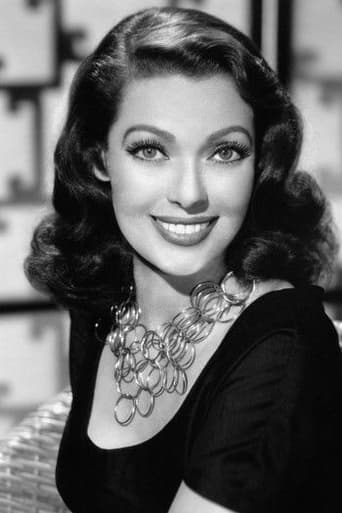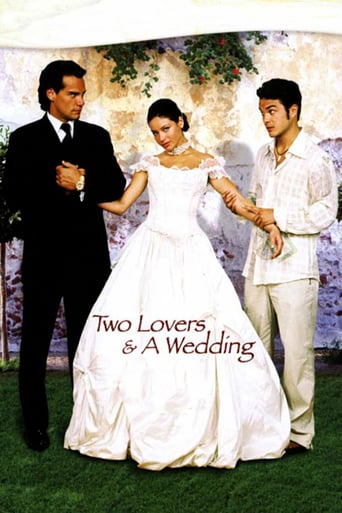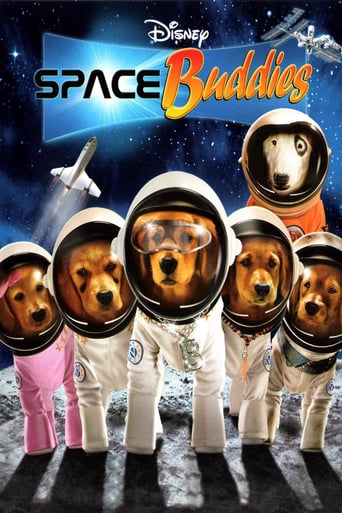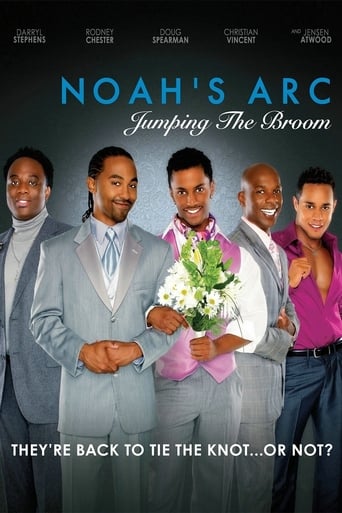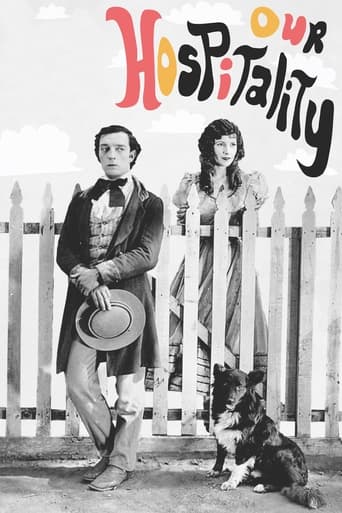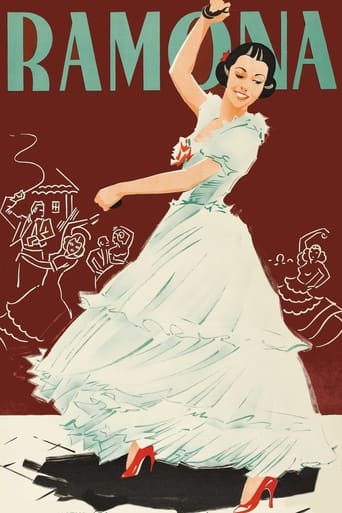
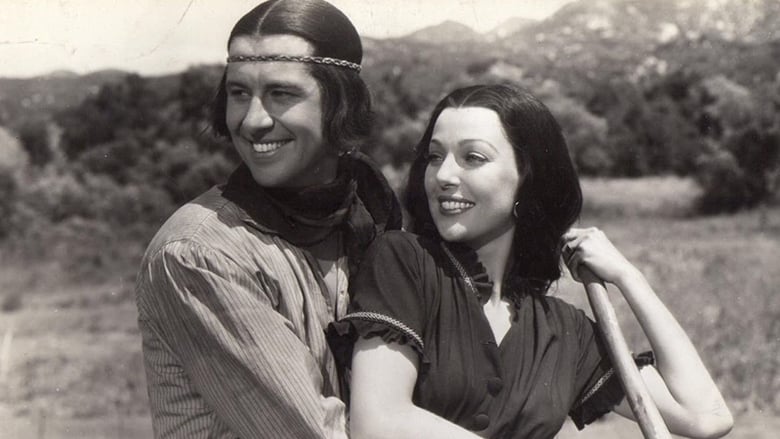
Ramona (1936)
Half-Indian girl brought up in a wealthy household is loved by the son of the house against his family's wishes and loves another Indian employed by the household.
Watch Trailer
Cast
Similar titles
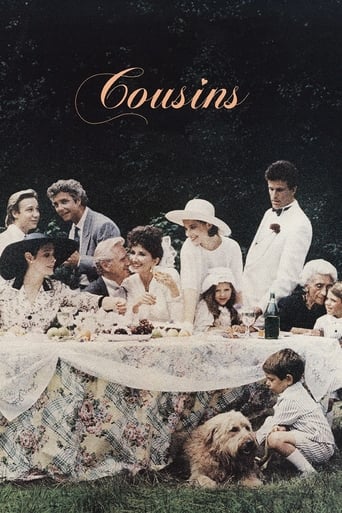


Reviews
To me, this movie is perfection.
That was an excellent one.
The film makes a home in your brain and the only cure is to see it again.
Although I seem to have had higher expectations than I thought, the movie is super entertaining.
The first of many slices of Technicolor Americana to be made for 20th Century Fox by veteran director Henry King; like the same year's 'The Trail of the Lonesome Pine' and 'The Garden of Allah', 'Ramona' was based on a novel that had already been filmed in the 1920s. Even without William Skall's sumptuous Technicolor photography, it stands up well as a watchable, well-acted drama in its own right; while much of what it says about white America's mistreatment of minorities still remains all too topical.Loretta Young and Don Ameche (before he grew his moustache) make attractive leads, donning black wigs in none-too successful attempts to convince us that they're of native American ancestry. With the exception of J.Carrol Naish - saddled with providing unfunny comic relief in a frequently incomprehensible accent - the rest of the cast are uniformly excellent.Many of the attitudes expressed in the film remain depressingly familiar today; Jane Darwell's haste to reach for a firearm when she thinks she's dealing with non-believers, for example. As in other Hollywood films of the thirties the law is shown being routinely used by the strong to bully the weak. The Settlement Act enables a white settler to shoot an Indian farmer with impunity; while John Carradine plainly isn't constrained by any worry that shooting an unarmed man three times simply for stealing his horse might get him hanged.
There are legendary moments in Hollywood history where somebody is so blatantly miscast that the results are ridiculous. In most cases, the fault is not the actors, but in a few (most memorably, John Wayne as Ghengis Khan in "The Conquerors"), there is no place else to point the finger. In 1936, Hollywood cast Don Ameche and Loretta Young as "Native Americans" (or "Indians" as they refer to themselves here), simply darkening their skin while giving them black wigs or shoe polish to change their appearance. This was Ameche's first leading role, but Young had been a major star since the beginning of talkies. Of course, the roles were obviously challenging, and both stars give their best to make their characters as real as possible. But 78 years later, their casting raises eyebrows and creates a lot of controversy over the so-called "Golden Years" of Hollywood.In spite of that, this is a riveting movie that you can enjoy if you simply just get past the fact that Ameche, no matter what his background was, came off as too All-American and that Young, even if playing only partial "Native", was as Caucasian as they come. Had the film been made in black and white, their appearances wouldn't transcend the character's nationalities. Yet, being only one of several films made in color that year ("The Trail of the Lonesome Pine" also came out), "Ramona" is still striking to look at, and there are moments when you see that the script really is taking great pains to show sympathy to the people whose land our forefathers stole from underneath them. In fact, that is what is going on here. Landgrabbers come to California, are willing to kill to get their hands on the precious soil already planted on, and Ameche, Young and their baby girl are displaced with no place to go. A pattern in history to be sure. Just look at "Fiddler on the Roof".Ramona is the beautiful heroine, a young girl unaware even in spite of the fact that she looks "native" (or is made to at least appear it) that she is the daughter of an Indian maiden who died and was brought up by her father's second wife. Resentful Pauline Frederick takes her in and mistreats her for years, sending her off to the convent to get "the heathen spirit" out of her, and threatens to do so again when she catches her kissing hired hand Ameche, a full blooded native. Ameche and Young escape before she can be sent back to the convent again, raise their family, are displaced, then find comfort in the home of the sweet Jane Darwell. At first, the kindly fat woman is aghast to find out that they are "Indians" but relieved to find out that they are Christians. "As long as a man believes that Jesus was their savior, they are fine with me no matter the color of their skin", she says after getting over her initial fears. Yes, this film is filled with a racist overtone that tries to present the Indians as human beings who can be "reformed" with Caucasian help and Darwell is doing her Christian duty to do just that. But this is also a tragedy and humanity must suffer if we are to learn lessons from hatred and intolerance. So while I have misgivings about the casting and certain elements of the plot, I know it is a reflection of its time, and history must be documented to show the evils of what prejudice truly is. A pioneer woman like Darwell would indeed come to look at Indians as heathens who can be made whole, and since this took place well over a century ago, we can look back at this and be glad that attitudes have changed, that education has proved our fore-fathers to be misguided, and that while is certainly not perfect, society looks at racist views with disgust and intolerance with an intoleration for it.The supporting cast features a variety of familiar faces in important roles, notably Katherine de Mille as a jealous Indian girl who spills the beans about Young and Ameche to Fredericks; Kent Taylor as Fredericks' son who is secretly in love with Young; Victor Kilian as a comical monk who marries Young and Ameche; and John Carradine as a farmer who vows revenge when he catches Ameche stealing his horse. Henry King, a director of many historical epics of this nature, does an outstanding job of getting every physical detail just right, and even if you can't stomach some of those old ideals, you can't help but be taken in by the film's physical beauty.
I have read the novel "Ramona" a few times, and it seems something was lost when the book was translated into film. First of all, the story takes place in the Spanish colonial days of California, and this is why the Native Americans are speaking with Spanish accents. The "gringo" white people (Americans) are seen as the villains because they mostly are Protestant and are moving into a predominantly Catholic area and are claiming land that had been granted to Spanish settlers by the King of Spain. There was this same ill feeling about gringos or "white settlers" when Texas was in the process of separating from Mexico and becoming part of the United States.As for Ramona's being a half-breed, the novel explains she is the child of the Spanish rancher and his Native American girl friend. The rancher brings her, as an infant, to the hacienda, and the rancher's wife agrees to bring up her husband's illegitimate daughter as if the child were her own or at least her social equal.I am not sure of Loretta Young's heritage, but I believe she was a devout Catholic and perhaps was of Latin descent. It so happens her sister Georgiana was married to Ricardo Montalban, so Miss Young was associated with Latin Americans in her private life. Mr. Ameche was an Italian-American and no doubt Catholic, so he fit into this story of Spanish-colonial California very well.I hope this explanation has helped some reviewers better understand the background of "Ramona." One of my favorite scenes is the priest coming to bless the flock of sheep and crops each spring. It is reminiscent of the same blessing in "The Thorn Birds" and the annual "Blessing of the Fleet" in the Gulf Coast area of the United States.
While Loretta Young and Don Ameche get top billing, there is no question that the real star of "Ramona" is the "new perfected technicolor" as the film's poster declared in 1936. The film was the 4th to be shot in the "perfected" 3-strip color process."Ramona" does looks beautiful. Its the slow-moving plot that really does the film in. I've seen travelogues from the period that have more to hold a viewer's attention. Basically, the story revolves around a taboo romance between Young (a beautiful Spanish girl) and Ameche (the friendly Indian). The most interesting aspect of the plot is the fact that the white settlers are portrayed as the villains, grabbing the land and possessions of the peaceful Indians...an unusually politically correct position for a mid 1930's movie.If you're a fan of Loretta Young, Don Ameche, or beautiful technicolor, "Ramona" is worth a look...at least once. Repeat viewings could be painful.
